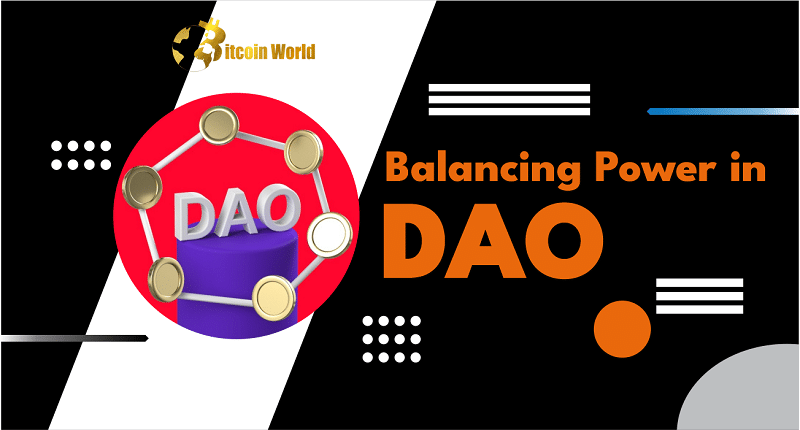Decentralized autonomous organizations (DAOs) are gaining popularity as an alternative to conventional hierarchical structures in the blockchain and cryptocurrency industry. Rather than being managed by a centralized authority, these groups function based on rules contained in computer software. DAOs seek to foster a more democratized and decentralized approach to governance and decision-making while assuring equitable power allocation among members. However, without the necessary checks and balances, power can still be concentrated among a few members of a DAO, which can lead to serious problems.
In this blog article, we will look at several techniques for balancing power inside DAOs and their advantages and disadvantages. Token-based voting, reputation-based voting, liquid democracy, and multi-stakeholder decision-making are the most frequent ways.
Token-based voting is a popular form of decision-making in DAOs. Members of the DAO must keep tokens representing their ownership in the organization. The number of votes members may cast is determined by the number of tokens they own. Token holders may make ideas, which the community votes on. Each token holder’s voting power is proportional to the number of tokens they own. Token-based voting fosters a more democratic atmosphere for collective decision-making, but it may still result in power being concentrated in the hands of a few token holders, particularly if they possess a large number of tokens.
Members are assigned a reputation score based on their contributions to the organization, and members with a high reputation score are granted preferences throughout the decision-making process. Reputation-based voting encourages members to contribute to the organization actively and supports a merit-based system. This strategy, however, has the potential to marginalize newer or less-active members who may not have had the chance to build up a solid reputation score.
Liquid Democracy blends token-based and reputation-based voting, enabling members to vote directly on proposals or delegate their vote to trustworthy members. Members may withdraw their delegated votes at any time, enabling them to amend their vote if their representative is not sufficiently reflecting their interests. Liquid Democracy allows for a more flexible and fluid decision-making process and equitable power distribution. However, power can still be concentrated among a few trusted representatives.
Multi-stakeholder decision-making engages all stakeholders, including members, consumers, suppliers, and the larger community, in the decision-making process. This strategy guarantees that decision-making is inclusive and representational, allowing every stakeholder to have a say in the organization’s future. Multi-stakeholder decision-making is focused on the whole community’s interests, ensuring that choices are not skewed toward a certain group or person. This technique, however, may make decision-making procedures time-consuming and difficult.
Finally, power balancing in DAOs is critical for effective governance and decision-making. Token-based, reputation-based, liquid democracy and multi-stakeholder decision-making are all possible approaches to power distribution in DAOs. Each strategy has advantages and disadvantages; the optimal option relies on the organization’s goals and features. DAOs may encourage a more democratized and decentralized approach to governance and decision-making by employing the proper technique, guaranteeing a fair power allocation among members.














